Simulation Standard Technical Journal
A Journal for Process and Device Engineers
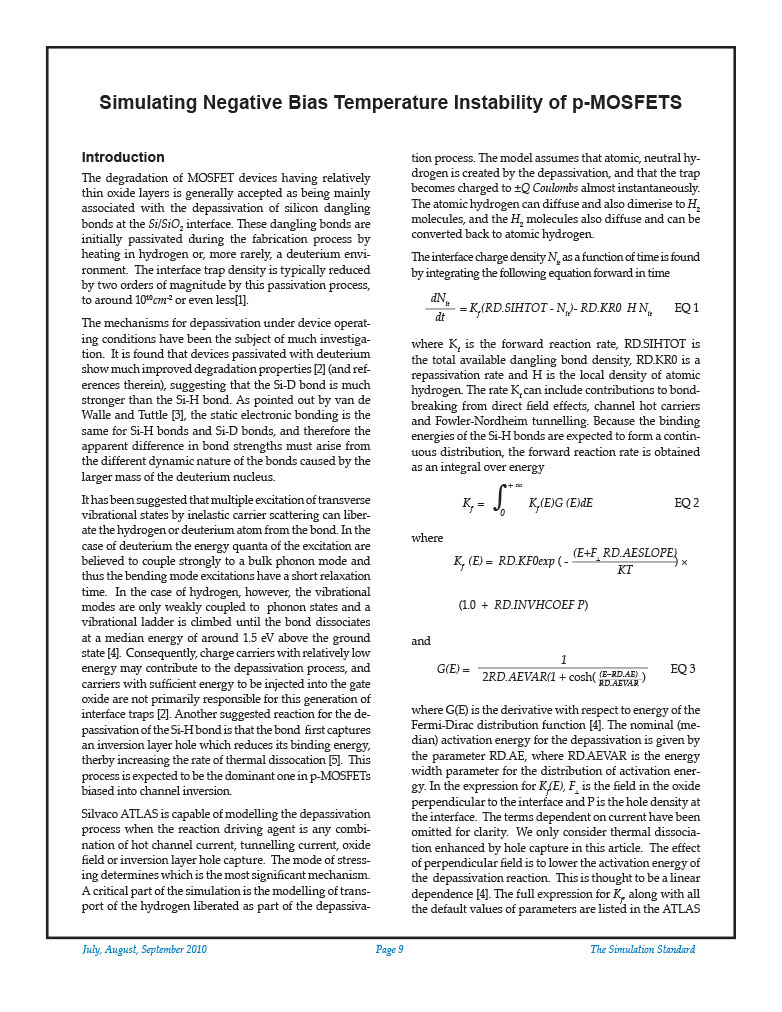
Simulating Negative Bias Temperature Instability of p-MOSFETS
The degradation of MOSFET devices having relatively thin oxide layers is generally accepted as being mainly associated with the depassivation of silicon dangling bonds at the Si/SiO2 interface. These dangling bonds are initially passivated during the fabrication process by heating in hydrogen or, more rarely, a deuterium environment. The interface trap density is typically reduced by two orders of magnitude by this passivation process, to around 1010cm-2 or even less[1].

Coupled Optimization of Diode and IGBT Characteristics Under Clamped Inductive Switching in ATLAS MixedMode and Virtual Wafer Fab (VWF)
Virtual Wafer Fab’s powerful range of optimizers are used to investigate and minimise the coupled switching losses of a TCAD IGBT and its clamping diode in a chopper circuit. It is shown that it is vital that the designer concurrently optimizes both the switching losses of the IGBT and the clamping diode in a single operation.
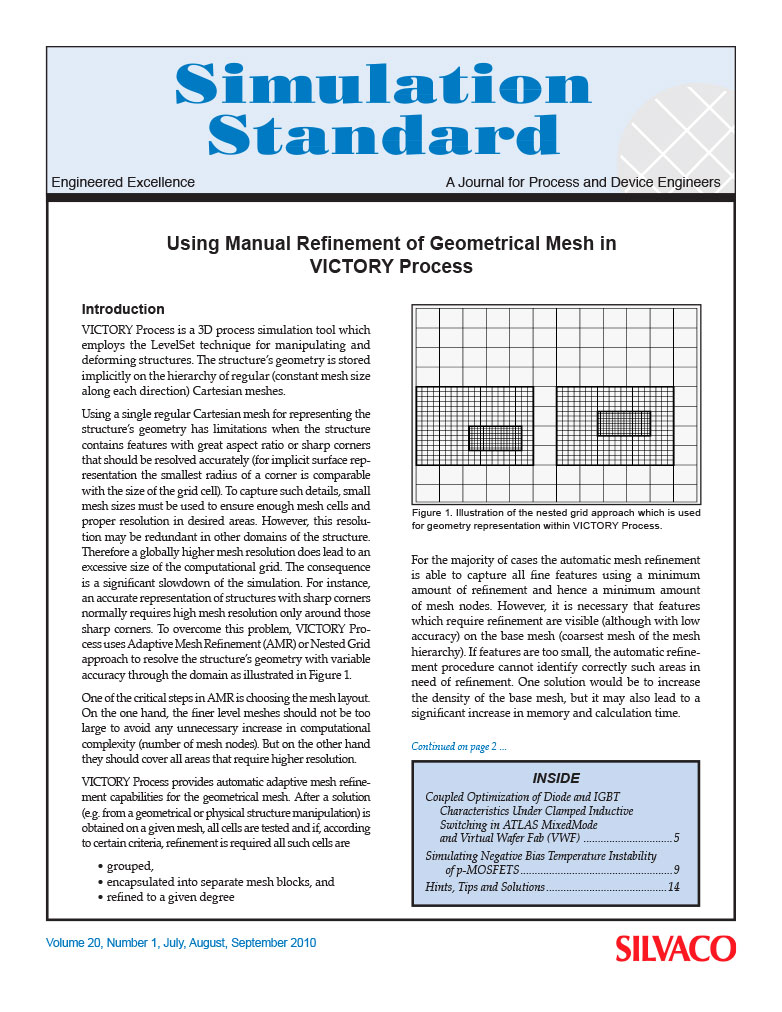
Using Manual Refinement of Geometrical Mesh in VICTORY Process
VICTORY Process is a 3D process simulation tool which employs the LevelSet technique for manipulating and deforming structures. The structure’s geometry is stored implicitly on the hierarchy of regular (constant mesh size along each direction) Cartesian meshes.
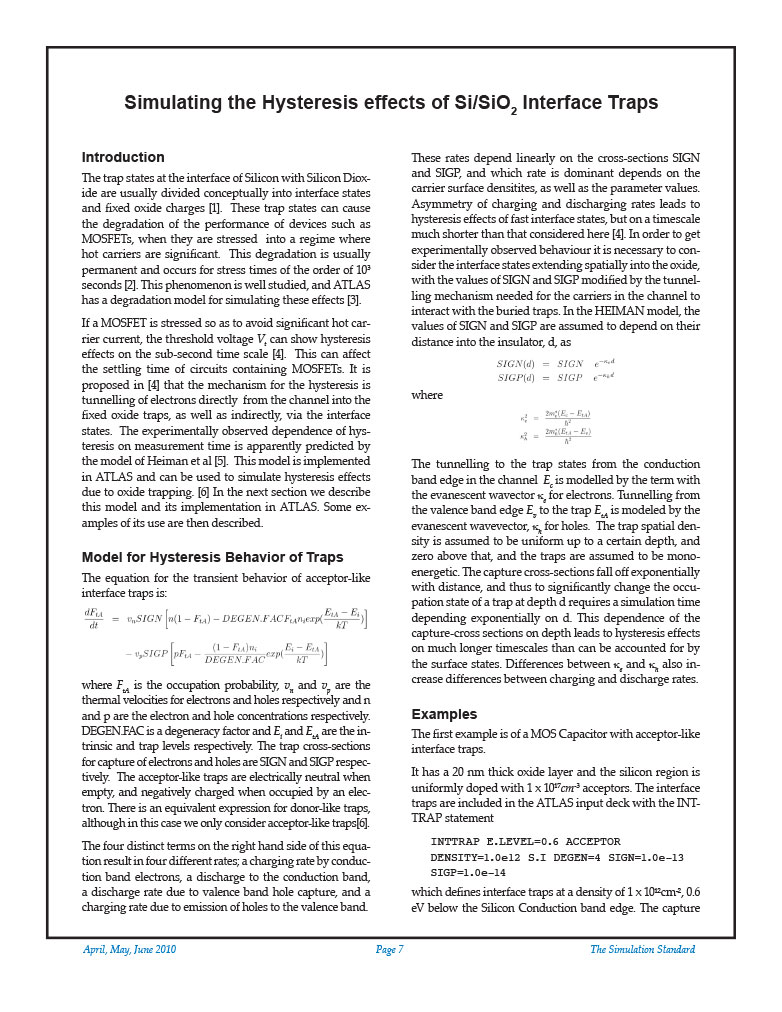
Simulating the Hysteresis effects of Si/SiO2 Interface Traps
The trap states at the interface of Silicon with Silicon Dioxide are usually divided conceptually into interface states and fixed oxide charges [1]. These trap states can cause the degradation of the performance of devices such as MOSFETs, when they are stressed into a regime where hot carriers are significant. This degradation is usually permanent and occurs for stress times of the order of 103 seconds [2]. This phenomenon is well studied, and ATLAS has a degradation model for simulating these effects [3].
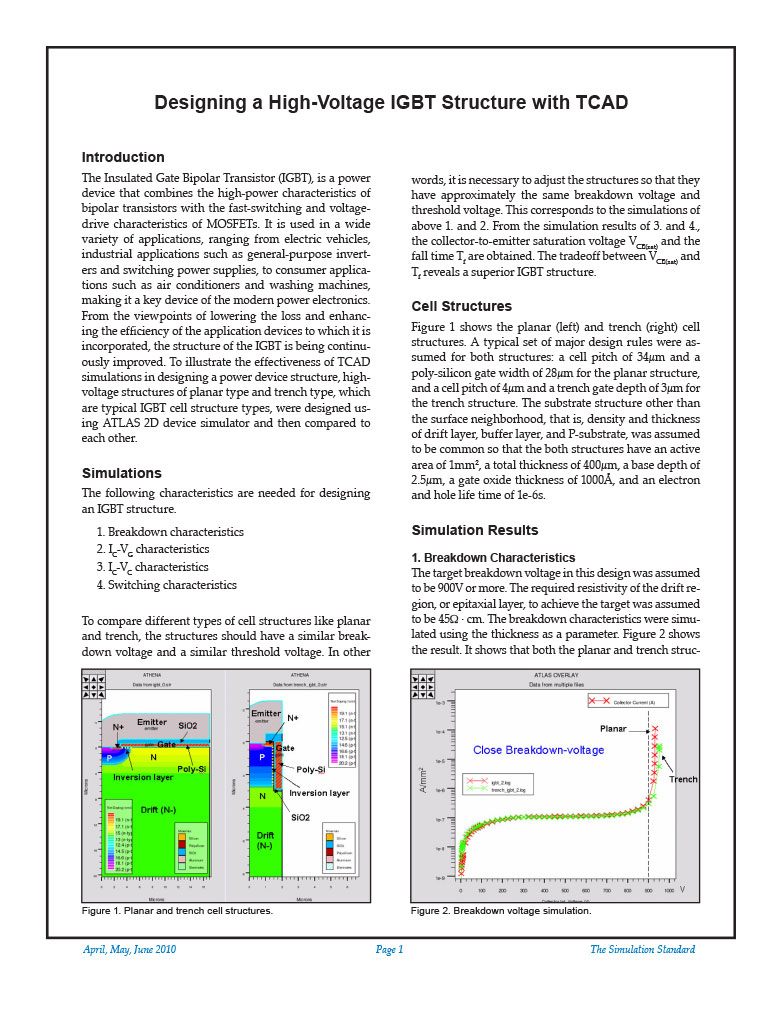
Designing a High-Voltage IGBT Structure with TCAD
The Insulated Gate Bipolar Transistor (IGBT), is a power device that combines the high-power characteristics of bipolar transistors with the fast-switching and voltage-drive characteristics of MOSFETs. It is used in a wide variety of applications, ranging from electric vehicles, industrial applications such as general-purpose inverters and switching power supplies, to consumer applications such as air conditioners and washing machines, making it a key device of the modern power electronics. From the viewpoints of lowering the loss and enhancing the efficiency of the application devices to which it is incorporated, the structure of the IGBT is being continuously improved. To illustrate the effectiveness of TCAD simulations in designing a power device structure, high-voltage structures of planar type and trench type, which are typical IGBT cell structure types, were designed using ATLAS 2D device simulator and then compared to each other.
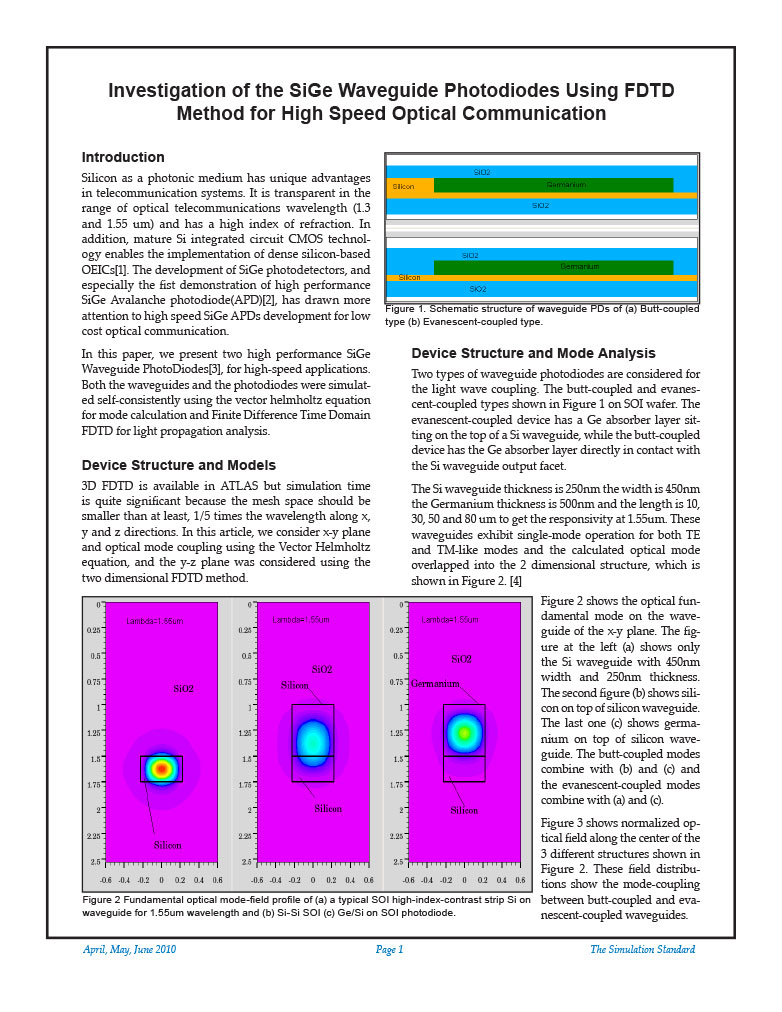
Investigation of the SiGe Waveguide Photodiodes Using FDTD Method for High Speed Optical Communication
Silicon as a photonic medium has unique advantages in telecommunication systems. It is transparent in the range of optical telecommunications wavelength (1.3 and 1.55 um) and has a high index of refraction. In addition, mature Si integrated circuit CMOS technology enables the implementation of dense silicon-based OEICs. The development of SiGe photodetectors, and especially the fist demonstration of high performance SiGe Avalanche photodiode(APD)[1], has drawn more attention to high speed SiGe APDs development for low cost optical communication.

